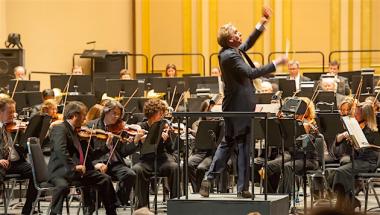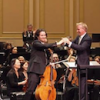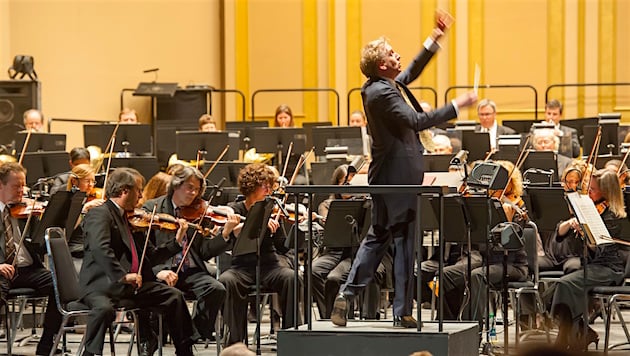
Well attended and enthusiastically received at the Marin Center’s 2,000-seat Veterans’ Memorial Auditorium, Marin Symphony concerts are hardly an under-the-radar secret. But there’s a distinctly North Bay vibe to the crowd that makes a San Francisco listener wish more people made the trip to hear them. This is a destination that deserves be on anyone’s musical map.
The orchestra, under music director Alasdair Neale’s limber and engaging leadership, creates a big, solid sound that’s rooted deeply through the sections. In broad-canvas works such as the potent Dvořák Symphony No. 7 they performed on Sunday afternoon in the first of two concerts, the Marin band can generate a forceful momentum that drives phrases, themes, and movements together. It was an exciting, at times almost recklessly impassioned reading that seemed to reinvigorate a familiar work.
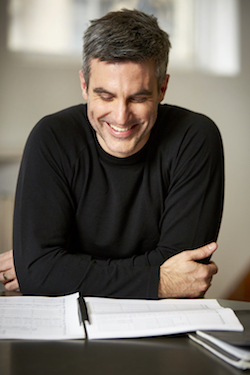
Arresting, on different terms, were the shimmery tone painting and stormy outbursts of orchestral color in Kevin Puts’s 2007 showpiece Two Mountain Scenes. In a work that might serve as a kind of 21st-century gloss on Beethoven’s Symphony No. 6 (Pastoral), which is on the Marin Symphony bill in March, these two contrasting nature Scenes unfolded in cinematic splendor. The spaciousness of American composer Roy Harris came to mind.
First came the effect of a trumpet fanfare echoing around a Rocky Mountain terrain. (The composer has specified that landscape as his inspiration.) The strings supplied caressing, long-line contours as the four expert trumpeters kept registering their closely harmonized presence in the distance. A mountain rainstorm followed in the second of these Scenes, all gusting strings and buffeted percussion. The short, pictorial work’s triumphalism seemed a little trumped up. But Neale and his forces did a persuasive job of selling these flashy goods.
The liability of the ensemble’s qualities became apparent in Mozart’s Piano Concerto No. 23, with David Fung as soloist. Right from the start, in the orchestral announcement of the opening material, the temperament of the performance leaned toward earnestness and away from a supple interplay and dexterous weaving of effects. It didn’t help matters that Fung, for all his admirable clarity and articulation, had little to say about the work. Pellucid passagework and a transparent tone only go so far when the dynamics and phrasing sound so uniform. Exaggerated rubatos here and there only emphasized the mechanical character of this reading. The achingly lovely Adagio seemed to slowly pull apart at the seams.
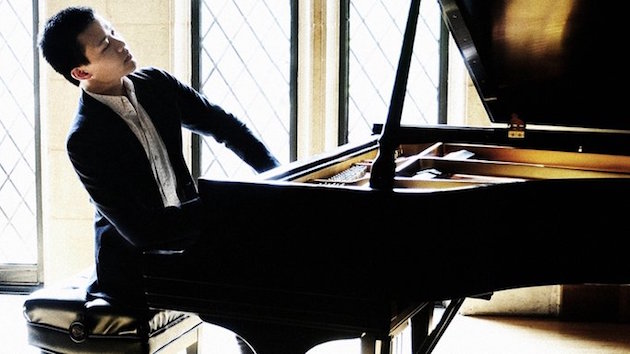
That said, technical prowess can beguile when it seemed as effortless as Fung’s in the fleet-footed and faultless closing Rondo. The ebullience and wit that had been missing before came sparkling forth in the movement’s sprays of runs and thematic elaborations. The soloist’s flair for making the left hand sound as vital as the right was especially notable.
The Dvořák, by any measure, was the main event. Dark-hued from beginning to end, the symphony took its early cues from the cellos’ dusky, mournful expressiveness. The woodwinds made poignant and sometimes pungent observations, while the horns were restless and foreboding. These were darker storm clouds than those the blew over in Puts’s Mountain Scenes.
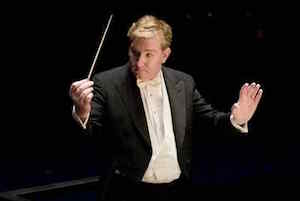
Neale gave the Adagio a questing, exploratory quality. The strings had a ruminative cast, while a conversation traded through the woodwinds widened into something eerie. The cellos checked in again in brooding fashion.
The Scherzo, with its seductive folk melodies, was perhaps the most telling movement of all. Often heard as a kind of romantic idyll, the Scherzo came off here in a more wistful, longing mode. The lyrical surges were all the more sweet for the shadowed realms from which they strove to break forth. The Finale: Allegro suffered from a few mistimed entrances. But that hardly dimmed the sense of fury and purpose that rose through the work’s dramatic, stirring and here unnerving final pages.
It was fitting that the sunny Marin afternoon had clouded over and darkened by the time the big crowd left the hall. There had been enough weather inside, it seemed, to spill over outside as the sun went down.

